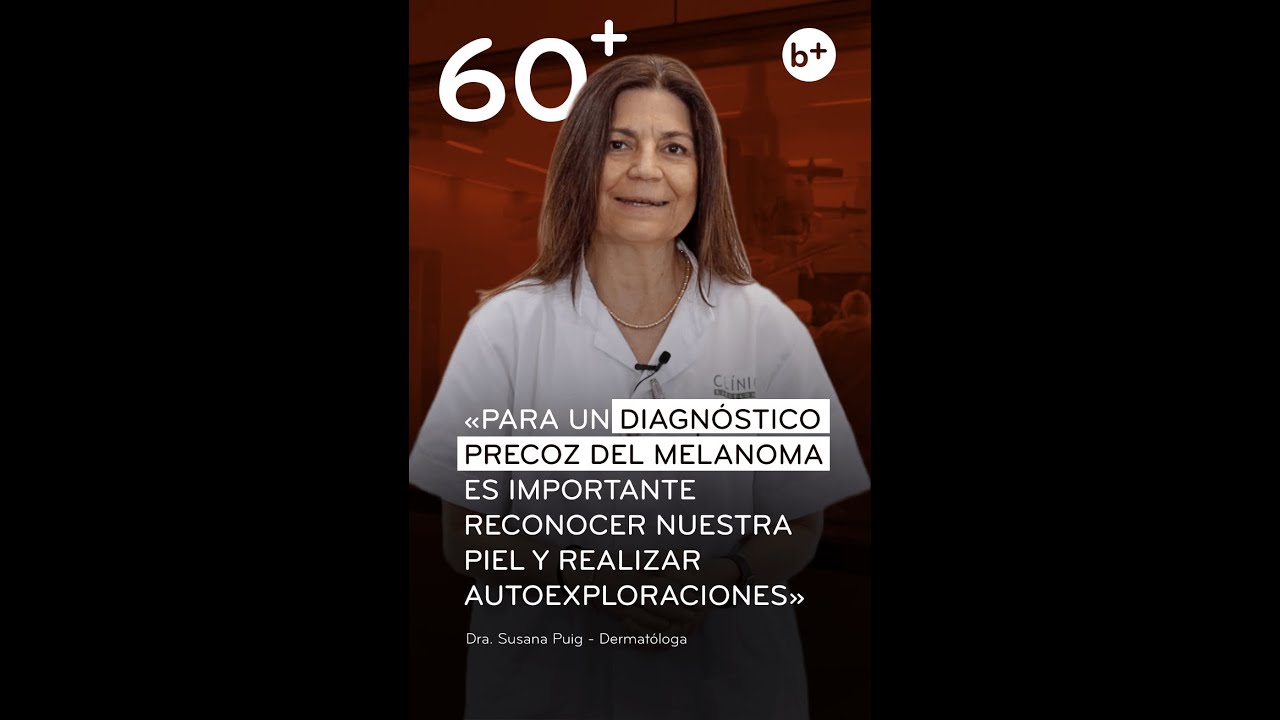16 de August de 2022
Diagnosis of melanoma, the importance of self-examination and advances in its treatment

As in any tumour, an early diagnosis of melanoma, a type of skin cancer that is caused by the abnormal growth of cells that produce the pigment that gives our skin its colour or melanocytes, is essential for a good prognosis of the disease. Detecting tumour lesions when they are in the early stages will help to better manage the disease and will prevent and reduce the possibility that the tumour can spread to other parts of our body, which is known as metastasis.
YOU MAY BE INTERESTED IN…
– Genética y exposición solar son los principales factores de riesgo del melanoma
Unlike other tumours, the fact that the lesions are visible to the naked eye is a great advantage to help in this early diagnosis of skin cancer and melanoma. “For this, it is important to recognise our skin and perform self-examinations that will allow us to realise if a mole has appeared or if those that already exist have changed shape or colour, which are all indicators of a possible melanoma,” explains Dr Susana Puig, head of the Dermatology Service at the Hospital Clínic de Barcelona and dermatologist at barnaclínic+.
“To help with the early diagnosis of melanoma, it is important to recognise our skin and carry out self-examinations that will allow us to realise if a mole has appeared or if those that already exist have changed shape or colour”
Dr Susana Puig, Head of the Dermatology Service at the Hospital Clínic de Barcelona and dermatologist at barnaclínic+
THE ABCDE TO DIAGNOSE A MELANOMA: SELF-EXAMINATION
In this self-examination, it is important to follow a mnemonic rule that can help keep in mind all the variables that make one think that it is a suspected melanoma mole. It is the ABCDE rule:
- A for asymmetry: If we see that the mole has an asymmetric shape, it is the first indicator of suspicion.
- B for borders: Irregular borders can also warn us of a possible melanoma.
C for color: The colour of a mole should be uniform. If a mole has multiple colours or shades, we should be suspicious. - D diameter: When a mole has a diameter greater than 5 mm, a specialist should also be consulted.
- E for evolution: If a mole grows or changes shape, size or colour, we should also suspect a possible melanoma.
Any mole that meets one of these characteristics is a reason for consultation with a dermatologist. Once there is one of these suspicions, imaging equipment will be used, such as digital dermoscopy, a skin examination technique that uses a high-quality magnifying lens that allows a thorough examination of the skin’s structure, or the confocal microscope, a microscope that uses an optical imaging technique to increase contrast and/or reconstruct three-dimensional images.
The barnaclínic+ Dermatological Diagnostic Unit also has the new Vectra360 robot, a device that combines 3D images with sequential digital dermoscopy images to non-invasively track both melanomas and non-melanoma skin cancers. “It is the first equipment that allows us a 3D reconstruction of our entire body and captures all skin lesions, especially moles. This allows us an evolutionary and comparative control that identifies lesions with minimal changes that are suspicious of being melanomas and that with the usual inspections could go unnoticed”, explains Dr Puig.
“The new Vectra360 robot allows us an evolutionary and comparative control that identifies lesions with minimal changes that are suspicious of being melanomas and that with the usual inspections could go unnoticed”
Dr Susana Puig, Head of the Dermatology Service at the Hospital Clínic de Barcelona and dermatologist at barnaclínic+
If the suspicion that a lesion is malignant is maintained after the use of these techniques, tissue is extracted to carry out a biopsy. “This will tell us more specifically the prognosis of melanoma and the most appropriate treatment to combat it” adds the expert.
YOU MAY BE INTERESTED IN…
– barnaclínic+ launches its Dermatological Diagnosis Unit
– Skin cancer and melanoma
SIGNIFICANT IMPROVEMENTS IN THE TREATMENT OF MELANOMA
The most common treatment for melanoma is the surgical removal of the tumour. However, sometimes this is not enough and other systemic treatments are also necessary. These treatments have an effect not only on the lesion but on the entire body and help us both to prevent and treat distant metastases.
There are currently two main branches of systemic treatment for melanoma. On the one hand, there is immunotherapy, in which it is possible to increase the defences of our own body to fight against the tumour. On the other hand, there are targeted therapies and treatments that target specific tumour mutations.
But without a doubt what has most revolutionised the treatment of melanoma in recent times is immunotherapy. “Although this type of therapy has been known for more than twenty years, it has not been until the last decade that much more has been developed. In 2011, an immunotherapy drug that revolutionised the treatment of melanoma was approved and since then new drugs have been approved that have been incorporated and that have substantially improved the survival of these patients”, Dr Susana Puig points out.
“In 2011, an immunotherapy drug that revolutionised the treatment of melanoma was approved and since then new drugs have been approved that have been incorporated and have substantially improved the survival of these patients”
Dr Susana Puig, Head of the Dermatology Service at the Hospital Clínic de Barcelona and dermatologist at barnaclínic+
One of the strategies followed within immunotherapy is related to the “brakes” that prevent the immune system from getting out of control. Our immune system is very strong and can recognise tumour cells. However, this does not happen and it may be because there are other cells that block its activity or because the tumour cells themselves have learned to put the brakes on it. “For this reason, one of the treatments that has been developed and has achieved important results are monoclonal antibodies that are capable of blocking these brakes and thus freeing the immune system so that it can attack tumour cells,” concludes Dr Puig.



 “To help with the early diagnosis of melanoma, it is important to recognise our skin and carry out self-examinations that will allow us to realise if a mole has appeared or if those that already exist have changed shape or colour”
“To help with the early diagnosis of melanoma, it is important to recognise our skin and carry out self-examinations that will allow us to realise if a mole has appeared or if those that already exist have changed shape or colour”


